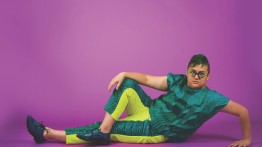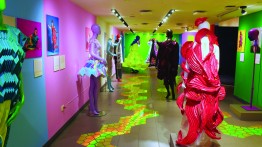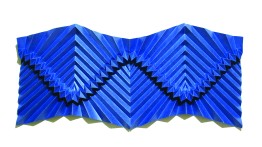Queer Geometries
POSTED ON: June 12, 2024
For Uyen Nguyen ME’14, antiprisms were the shape that first inspired the idea of combining their work in mathematics with artistic practice. Nguyen employs this geometric form, characterized by its flat-foldability, to explore intersections of queer identity, origami, and fashion. Antiprisms: Stories of Transformation, an exhibition presented this year by the National Museum of Mathematics (MoMath), weaves together narratives from the artist’s life and their experience coming into the queer community. The show includes pieces of origami fashion that were designed using equations but that also investigate queerness through individual stories, shared identities, and subversions of expectations and initial calculations.
Nguyen’s interest in origami dates to their time at Cooper when they curated Surface to Structure: Folded Forms, an acclaimed exhibition of 88 origami artists from around the world. The event followed a rich legacy at The Cooper Union, which in 1959 was host to the first origami exhibition in the United States.
“I wanted my first solo exhibition to be a ‘coming out’ exhibition,” Nguyen says. “I also wanted to celebrate the community around me that has helped me find myself.” To embody those themes, the artist created optical prisms in the shape of antiprisms. Consisting of two parallel polygonal faces rotated from each other and connected at their edges to form triangles (rather than, as with prisms, quadrilaterals), antiprisms fold in on themselves, suggesting transformation essential to both the art and mathematics of origami. Their visual form, however, can refract a rainbow pattern of light in the same manner as a prism, evoking contradiction, refusal to submit to rigid binaries, and pride in queer identities.
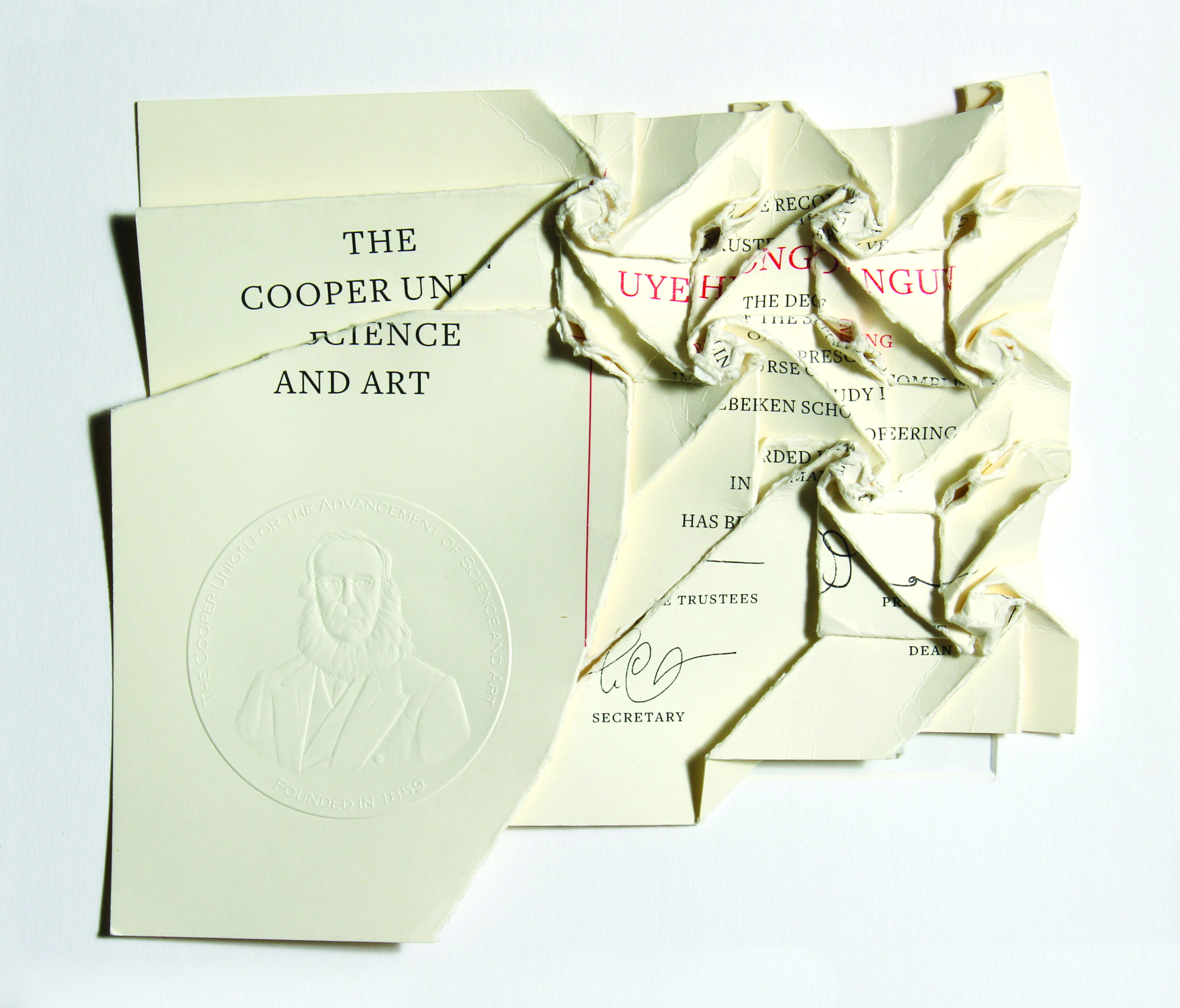
As an undergraduate in the School of Engineering, Nguyen founded Cooper’s Origami Club, hoping to create a space where folding paper could unite students’ interests in structure, form, and design across architecture, art, and engineering. “That was how I came to find much of my chosen family,” says Nguyen. “We came to learn that most of our members were queer, and so Origami Club functioned as the school’s de facto queer club. We’d watch RuPaul’s Drag Race together every week while folding, and the friends I made there are still my closest friends today.”
That desire to build community and bridge disciplines has been formative, both artistically and on an existential level. “If you Google ‘famous mathematicians,’ it is rare that you find openly queer people of color on the list,” the artist explains. They see the pieces exhibited in Antiprisms as a celebration of parallel journeys, including their own affirmative path as a non-binary, queer Vietnamese American artist with an engineering degree. The artworks themselves are an extension of that plurality, ranging from a handbag consisting of three octagonal antiprisms that collapse to reveal a star, a statement on the demands made of queer people to not take up space, to Decolonized Ball Gown, a play on “black tie” dress that confronts white supremacist norms in fashion. “I’ve been closeted for most of my life,” Nguyen says. “Because my art is so personal to me, I wanted my first solo show to be as authentically me as possible and didn’t want to present to the world a false version of myself.”
In 2019, Nguyen was one of more than 20 artists featured in another MoMath exhibition celebrating the union of creative practice and calculation, Math Unfolded. Curated by representatives of the nonprofit organization OrigamiUSA, the show explored methods by which artists can “persuade paper to embody the beauty of mathematics.” A New York Times article about the exhibition highlighted Nguyen’s Stem and Leaf Ensemble, in particular, an origami display that includes a 16-fold symmetrical skirt designed using the Fibonacci sequence, where the length of each segment of the skirt is the sum of the two segment lengths that precede it. Creating origami with fabric at such a scale is more difficult than folding paper, explains Nguyen. The work must be precisely designed to fold into a compact shape so that it can be baked in an oven, which sets the creases.
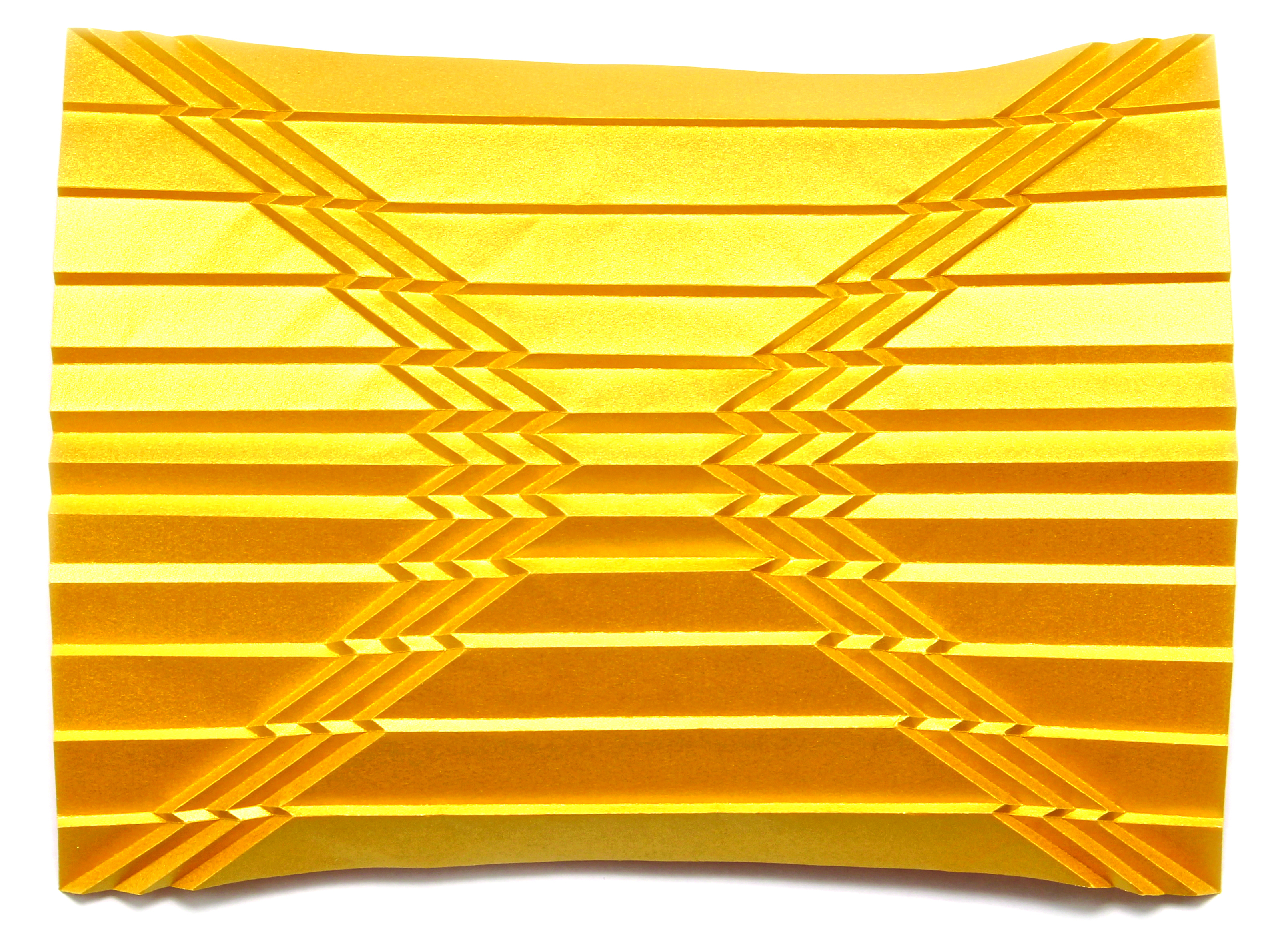
Nguyen’s goal for curating the 2014 Surface to Structure exhibition was to showcase the diversity of approaches and range of techniques that had evolved since The Cooper Union’s first origami exhibition more than a half a century prior. “Surface to Structure was my love letter to origami and much of the origami community,” Nguyen explains. “I wanted to share my love of the art form with the world in the hopes that others would learn about it and dismantle their perceptions that it is a mere kids’ craft.”
Their work at MoMath has contributed even further to widening that view of what pushing disciplinary boundaries can accomplish. Nguyen sees their practice as occupying the intersections of math, design, art, and fashion, challenging what they perceive as a false dichotomy separating the technical world from the world of creativity. “The technical and the creative are absolutely intertwined. I love blurring the boundaries between these disciplines because it enables me to create things that embrace all aspects of my craft, making them uniquely me.”
To that same end, Nguyen describes Antiprisms as their love letter to the queer community that has supported and affirmed their journey of self-discovery: “I wanted to showcase both the celebratory and the more difficult aspects of this journey. I wanted to set an example and give permission to anyone who needs it that it's OK to be authentically and unashamedly yourself, and that you don't need to know who you are all at once and it's OK to take the time to question and find yourself. I wanted to create an exhibition that felt like a safe space for queer individuals and let them know that they are valid and they have a place and belong in this world.”
Antiprisms will be traveling to Sweden this summer as part of Nguyen’s residency at Ifö Center in Bromölla. The exhibition opens August 17 and will be on view through the end of October.

